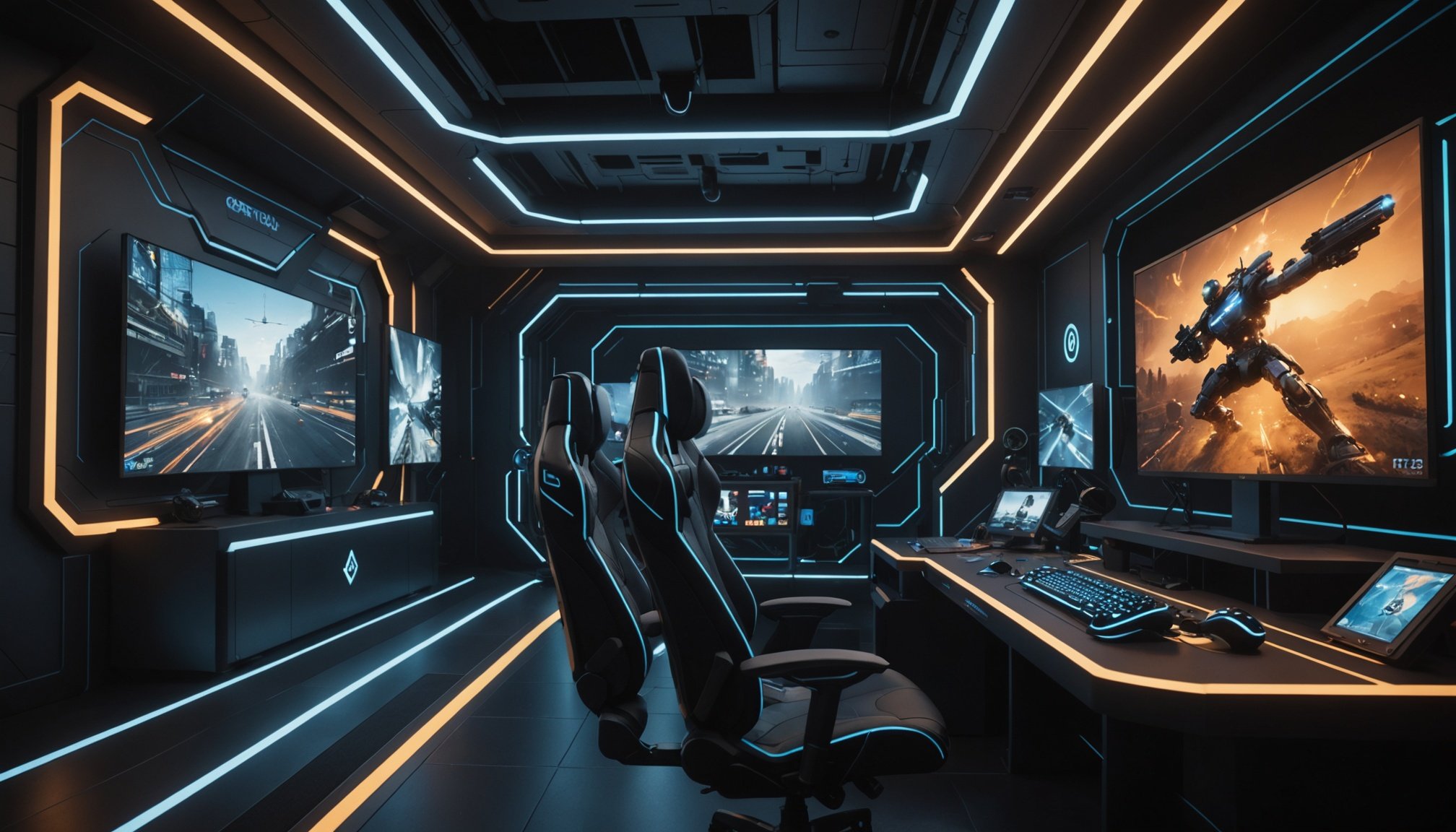Understanding AI in Gaming
In recent years, AI in gaming has transformed the way players engage with virtual worlds. AI shapes in-game characters’ behaviours, creating more realistic and unpredictable experiences. This technology innovation has enabled games to adapt to players’ actions, providing a personalised gameplay experience. Key gaming advancements have allowed for intelligent rivals that think and act like human opponents, enhancing the challenge and enjoyment of video games.
Technological Innovations
Several technological innovations propel AI in gaming forward. Machine learning algorithms enable games to analyse players’ tactics and adjust difficulty levels accordingly. Natural language processing allows non-player characters (NPCs) to understand and respond to player commands, leading to more interactive dialogues. Procedural generation is another vital advancement that uses AI to create expansive game levels and worlds, ensuring each playthrough feels fresh and unique.
Also to see : Unveiling the benefits and drawbacks of procedural generation in designing vast open-world landscapes
Importance of Lighting
Lighting is often underrated but holds immense significance in creating immersive gaming experiences. Through AI, dynamic lighting systems adjust to in-game environments, enhancing realism and mood. By simulating natural light patterns and shadows, games can elicit an emotional response, pulling players deeper into the game world. This meticulous attention to detail can transform a standard gaming session into a memorable adventure through its visually captivating landscapes.
Dynamic Real-Time Lighting Adjustments
In the world of gaming, dynamic lighting technology serves a crucial role. It allows game environments to adapt in real-time to changing conditions, unlike static lighting which remains fixed regardless of in-game events. These dynamic adjustments create a more immersive and realistic experience for players, enhancing engagement and the overall gaming atmosphere.
Have you seen this : Enhancing realism in social simulation games: how ai transforms authentic character interactions
Real-time lighting adjustments are vital for gameplay immersion as they can drastically change the look and feel of the scene. For instance, as a character passes through different environments, the lighting can shift naturally—offering sunset hues in an outdoor area or dark, shadowy tones inside a cave. These transitions occur seamlessly, providing a continuous and convincing visual narrative.
Moreover, real-time lighting allows for the simulation of complex scenarios, such as flickering torches or lightning flashes, adding another layer of depth and dynamism. This technology not only elevates visual quality but also impacts gameplay. Gamers must often react to changes in lighting, which can signal danger or highlight important areas within a game.
Such dynamic adjustments allow developers to craft more interactive and visually compelling worlds, capturing the players’ attention and maintaining their interest throughout the gaming session. This makes real-time lighting technology not just an aesthetic feature, but a fundamental aspect of modern game design.
Case Studies of AI Lighting in Popular Games
In recent years, AI lighting has revolutionized game environments, offering players immersive experiences. This section delves into specific examples of how AI lighting technologies have been successfully implemented in popular games.
Game Title One
One shining example is “Glimmer Realms,” where AI lighting features provide dynamic ambience that enhances mood and atmosphere. The game’s AI adjusts lighting based on player location and time, creating immersive environments that significantly impact players’ experiences. Users have praised the innovative lighting techniques for enhancing gameplay and storytelling, noting how these adjustments contribute to a more engaging and realistic gaming experience.
Game Title Two
Another notable example is found in “Shadow Circuit.” This game utilises dynamic lighting adjustments that adapt in real-time to various game situations. The AI’s capability to alter lighting based on gameplay circumstances showcases impressive technological advancements. Unlike traditional static models, Shadow Circuit’s lighting evolves with the narrative, prompting players to adapt strategically. The comparison with traditional methods highlights the AI’s superior ability to reflect changing environments accurately.
Game Title Three
Finally, “Lightcraft Legends” presents unique AI lighting implementations that impact both aesthetics and gameplay. The community appears highly engaged, praising the responsive lighting’s role in enhancing visual storytelling. There is excitement about the potential for such technologies to become a staple in future gaming experiences, suggesting a promising trajectory for AI-enhanced lighting in upcoming titles.
Benefits of AI-Driven Lighting Adjustments
Incorporating AI into lighting adjustments significantly enhances the user experience by elevating both immersion and engagement. As players navigate through diverse virtual worlds, AI-driven lighting provides a seamless blend of reality and fantasy, intensifying the gameplay enhancement. This immersive technology responds in real-time to player actions and environmental changes, creating a dynamic atmosphere that keeps players engaged.
Real-Time Adaptability
The standout feature of AI in gaming lies in its ability to adapt lighting conditions instantaneously. This adaptability ensures that in critical gaming moments, lighting perfectly complements the scenario, whether encountering a formidable enemy or exploring serene landscapes. As a result, players find themselves more connected to the gameplay, which is vital for a thriving user experience.
Long-term Impact on Game Design
Beyond immediate gameplay improvement, AI-driven lighting adjustments are reshaping gaming design and development trends. Developers now consider lighting a fundamental component rather than an afterthought. This shift allows for more creative freedom, enabling games to offer unique visual narratives and profoundly impacting how stories are told in games. This evolution in immersive technology paves the way for future gaming environments where every light and shadow play a crucial role in delivering unforgettable gaming moments.
Future Developments in AI Lighting Technology
In the realm of future trends and advancements in AI-powered lighting for games, several emerging technologies hold promise. The intersection of AI and lighting technology is set to revolutionise how games are experienced. As AI advancements progress, more sophisticated algorithms are being developed to simulate realistic lighting environments. This technological evolution is vital for creating immersive gaming future experiences that captivate players.
Looking ahead, predictions for how AI might enhance future gaming experiences suggest a focus on real-time lighting adjustments. These could include dynamic changes that respond to in-game events or player actions, offering a more interactive environment. Moreover, AI advancements may enable personalised lighting settings that adapt to individual player preferences or device capabilities, enhancing accessibility and customisation options.
Potential challenges in implementing these advanced AI lighting techniques involve hardware limitations and the computational power required to maintain high performance. Solutions are emerging, such as optimising algorithms for specific hardware or using cloud computing to offload processing demands. Developers and designers must collaborate to overcome these hurdles, ensuring the seamless integration of AI lighting in the gaming future. As these technologies mature, they promise to transform gaming landscapes with stunning visuals and engaging atmospheres.











